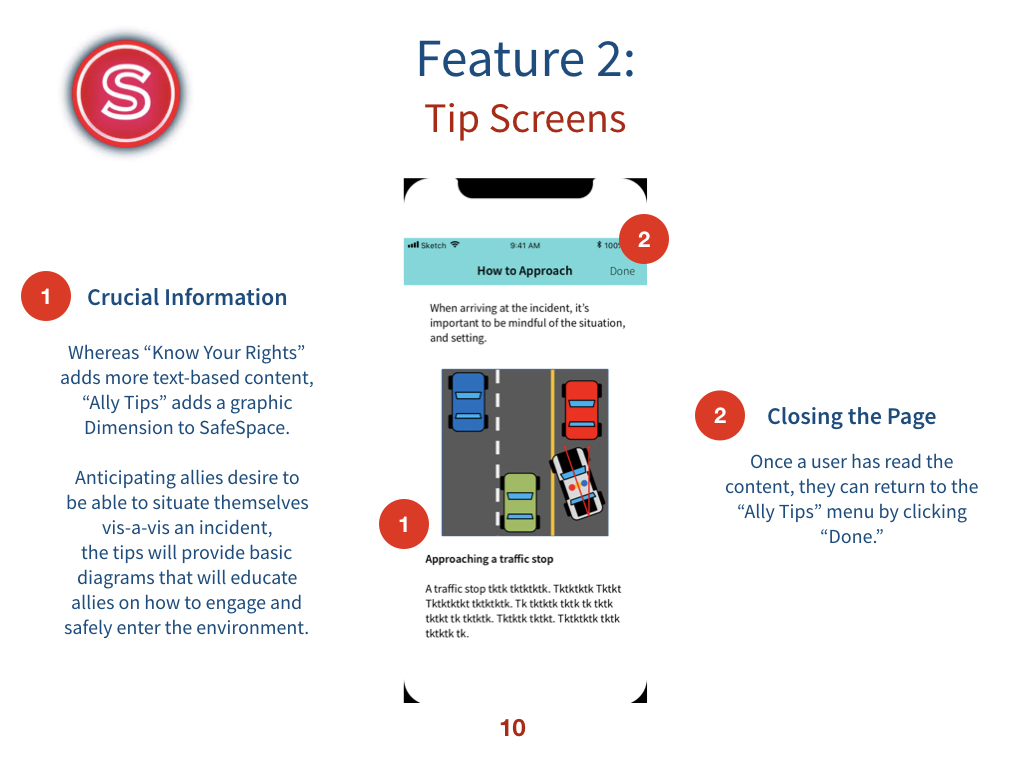Mobile Design: Safe Space
The Challenge:
SafeSpace is an application geared towards people of color to crowdsource safety during interactions with law enforcement. Our challenge was to propose and prototype features that will enhance SafeSpace's appeal and value to users. The proposed features must fit within the realm of what is realistically possible for SafeSpace's developers to realize within a budget of 25 points.
Timeline: One week sprint
My role: Researcher, Designer, Prototyper
Methods Applied:
Competitive Anaysis
Journey Maps
Feature Cards
Kano Analysis
Rapid Prototyping
Tools Used:
Pen & Paper
Sketch
OmniGraffle
Axure
Keynote
Understanding the Context
Through our stakeholder interview with creator Mondo Davison and a review of recent articles about the app, we gained a greater understanding of the current state of SafeSpace and its projected evolution.
In our competitive analysis we looked at other applications addressing personal safety, which gave us a sense of where there were gaps and where there was overlap.
Drawing from this initial research, I created a persona and journey map to identify landmarks along the way that could be added or improved.
Ideation Nation
Inspired by our research, our team generated a slew of feature cards that would enhance SafeSpace's functionality. Eugene, a developer at SafeSpace, then assigned each card a point valuation—reflective of the amount of time needed to develop them. This valuation helped determine the number of features we could build out within our budget.
Insights
Once I narrowed down the prospective features to a few representatives, I used Kano analysis to determine the value they'd add to users. Ideal for gauging present-moment sentiment around a feature—whether it's desired, required, neutral, or unwanted—this analysis yielded actionable, qualitative insight about user values.
One common theme was that the users surveyed valued features that equipped them with information—both as a caller and a responder.
Here we saw an opportunity to enrich the application with more resources.





Rapid Response
I homed in on some simple features for the first phase of refinement that will equip users with more information about how to handle encounters with the police.
I created prototypes of a "Know Your Rights" feature and an "Ally Tips" feature. The format of both is designed to be easy to navigate and gives clear case-by-case information on a number of common scenarios.
These tools ensure that, whether of not users are able to activate SafeSpace in the heat of the moment, they are empowered with accessible information from a reputable source.
In an ideal world
I would have liked more opportunities to observe actual users in situ, rather than relying on conjecture and competitive analysis. Because this app is typically deployed in charged situations, my research would have benefited from more contextual inquiry.





